- europages
- >
- COMPANIES - SUPPLIERS - SERVICE PROVIDERS
- >
- carboxylic and anhydric acids
Results for
Carboxylic and anhydric acids - Import export

TER CHEMICALS DISTRIBUTION GROUP
Germany
We offer ascorbic acid derivatives In guaranteed quality, at stable prices and packed appropriately for transportation. Do you need advice on choosing your product or are you looking for a suitable substitution? Our application and product experts are happy to help! Our experience and deep knowledge in the area of specialty chemicals and ingredients ensures that we are well positioned to effectively support both our customers and our suppliers with product and application expertise. Please contact us for more information!
Request for a quote
TER CHEMICALS DISTRIBUTION GROUP
Germany
We offer ascorbic acid In guaranteed quality, at stable prices and packed appropriately for transportation. Do you need advice on choosing your product or are you looking for a suitable substitution? Our application and product experts are happy to help! Our experience and deep knowledge in the area of specialty chemicals and ingredients ensures that we are well positioned to effectively support both our customers and our suppliers with product and application expertise. Please contact us for more information!
Request for a quote
TER CHEMICALS DISTRIBUTION GROUP
Germany
We offer amino acids In guaranteed quality, at stable prices and packed appropriately for transportation. Do you need advice on choosing your product or are you looking for a suitable substitution? Our application and product experts are happy to help! Our experience and deep knowledge in the area of specialty chemicals and ingredients ensures that we are well positioned to effectively support both our customers and our suppliers with product and application expertise. Please contact us for more information!
Request for a quote
JADAM
Portugal
Hydrogen peroxide 30%,50% ,60% Hydrogen Peroxide (H₂O₂) is a colorless liquid with a slightly sharp odor it is used as a bleach for textiles and paper, as a component of rocket fuels, and for producing foam rubber and organic chemicals, it is also used in medicinal applications and to bleach clothes and hair. Industries: Household chemicals, Fertilizers, Cosmetic industry, Horticulture, Pharmaceutical industry, Food industry Uses: Bleaching,Production of organic peroxy compounds,Production of inorganic peroxides Sewage treatment,Disinfectant,Propellant Properties: CAS number 7722-84-1 WE number 231-765-0 Chemical formula H2O2 Molar mass 34,01 g/mol Customs tariff code 28470000 ADR UN2014 pH 1,5 – 4 Melting / freezing point - 33°C (35%), -51°C (50%), -56°C (60%) Boiling point 108°C (35%), 114°C (50%), 119°c (60%) Relative density 1,07 g/cm3 (35%), 1,195 (50%), 1,241 (60%)
Request for a quote
JADAM
Portugal
Formaldehyde is a colorless, strong-smelling, flammable organic chemical with chemical formula CH2O it is produced industrially and used in building materials such as particleboard, plywood, and other pressed-wood products also it is used as a fungicide, germicide, and disinfectant, and as a preservative in mortuaries and medical laboratories It is produced naturally during the decay of plant material in the soil and during normal chemical processes in most living organisms, it is also a combustion product found in tobacco smoke. Industries: Household chemicals, fertilizers, adhesives, oils, greases, horticulture, feed industry, plastic industry, resins and textile industry Properties: CAS number 50-00-0 (36-50%) WE number 200-001-8 (36-50%) Index number 605-001-00-5 (35-50%) Chemical formula CH2O Customs tariff code 29121100 ADR UN2209 pH 3-4 Melting / freezing point ~100°C Boiling point / range 64–85°C Relative density 1,090–1,150 g/cm3 @20°C
Request for a quote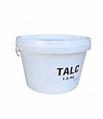
JADAM
Portugal
Talc is a naturally occurring mineral, mined from the earth, composed of magnesium, silicon, oxygen, and hydrogen. Chemically, talc is a hydrous magnesium silicate with a chemical formula of Mg3Si4O10(OH)2 Talc has many uses in cosmetics and other personal care products, it may be used to absorb moisture, to prevent caking, to make facial makeup opaque, or to improve the feel of a product Industries: Paints and varnishes, Household chemicals, Cosmetic industry, Adhesives, oils, greases, Pharmaceutical industry, Building chemistry, Resins, plastics, polyurethanes Talc is used in many industries, including paper making, plastic, paint and coatings, rubber, food, electric cable, pharmaceuticals, cosmetics, and ceramics Properties: CAS number 14807-96-6 WE number 238-877-9 Chemical formula 3Mg2∙4SiO2∙H2O Molar mass 379,34 g/mol Customs tariff code 25262000
Request for a quote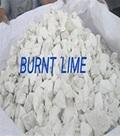
JADAM
Portugal
Burnt lime Calcium oxide (CaO), commonly known as quicklime or burnt lime, It is a white, caustic, alkaline, crystalline solid at room temperature Calcium oxide that survives processing without reacting in building products, such as cement, is called free lime Industries: Glass and ceramics production of glass, calcium aluminate cement, and organic chemicals production of aerated concrete such as blocks with densities of ca. the major use of quicklime is in the basic oxygen steelmaking (BOS) process the quicklime neutralizes the acidic oxides, SiO2, Al2O3, and Fe2O3, to produce a basic molten slag Properties: CAS number 1305-78-8 WE number 215-138-9 Chemical formula CaO Molar mass 56,08 g/mol Customs tariff code 28259019 pH 12,3
Request for a quote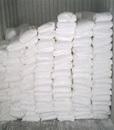
JADAM
Portugal
Hydrate lime Calcium hydroxide (traditionally called slaked lime) is an inorganic compound with the chemical formula Ca(OH)2 It is a colorless crystal or white powder and is produced when quicklime (calcium oxide) is mixed with water It has many names including hydrated lime, caustic lime, builders' lime, slaked lime, cal, and pickling lime Calcium hydroxide is used in many applications, including food preparation, also called milk of lime, is the common name for a saturated solution of calcium hydroxide Industries: Glass and ceramics used to prepare lime mortar as a flocculants, in water and sewage treatment because of its low toxicity and the mildness of its basic properties, slaked lime is widely used in the food industry Properties: CAS number 1305-62-0 WE number 215-137-3 Chemical formula Ca(OH)2 Molar mass 74,09 g/mol Customs tariff code 25222000 pH 12,4 @20°C Melting / freezing point > 450°C Relative density,2,24 g/cm3
Request for a quote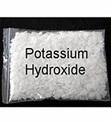
JADAM
Portugal
Potassium hydroxide is an inorganic compound commonly called caustic potash Along with sodium hydroxide (NaOH), KOH is a prototypical strong base, It has many industrial and niche applications, most of which utilize its caustic nature and its reactivity toward acids Industries: Household chemicals, Fertilizers, Cosmetic industry, Adhesives, oils, greases, Resins, plastics, polyurethanes Catalyst for hydrothermal gasification process Precursor to other potassium compounds Manufacture of soft soaps As an electrolyte Niche applications Properties: CAS number 1310-58-3 WE number 215-181-3 Chemical formula KOH Molar mass 55,11 g/mol Customs tariff code 28152000 ADR UN1814 Melting / freezing point 360°C (100% KOH) Relative density 2,044 @20°C (100% KOH)
Request for a quote
JADAM
Portugal
Sodium benzoate also known as benzoate of soda is the sodium salt of benzoic acid, widely used as a food and beverages to extend shelf life preservative and a pickling agent It appears as a white crystalline odorless powder with the formula C6H5COONa, made by combining benzoic acid and sodium hydroxide Industries: Household chemicals, Cosmetic industry, personal care items, Food industry, Feed industry used as deter corrosion, such as in coolants for car engines also as a stabilizer in photo processing and to improve the strength of some types of plastic properties:, CAS number 532-32-1 WE number 208-543-8 Chemical formula C6H5COONa Molar mass 144,11 g/mol pH,9 (100 g/l H2O @20°C) Melting / freezing point 410 – 430°C Relative density 1,44 g/cm3 @20°C Solubility in water 556 g/l @20°C
Request for a quote
JADAM
Portugal
Titanium dioxide, (TiO2), also known as titanium(IV) oxide or titania is a white, opaque, naturally occurring mineral existing in a number of crystalline forms, the most important of which are rutile and anatase. These naturally occurring oxide forms can be mined and serve as a source for commercial titanium Titanium dioxide is odourless and absorbent, mineral forms can appear black Because of its bright whiteness, it is used in products such as paints, coatings, papers, inks, toothpaste, cosmetics, glass, ceramics and food coloring Properties: CAS number,13463-67-7 Melting / freezing point Anataz: 1560°C, Rutyl: 1843°C, Brukit: 1825°C Boiling point range 3000°C Relative density Anataz: 3,9 kg/l (20°C), Brukit: 4,17 kg/l (20°C), Rutyl: 4,26 kg/l (20°C) Solubility in water 1μg/l Chemical formula TiO2 Appearance White solid Odor Odorless Molar mass 79.866 g/mol Density: 4.23 g/cm3 (rutile) 3.78 g/cm3 (anatase)
Request for a quote
JADAM
Portugal
Sodium chloride commonly known as table salt, is an ionic compound with the chemical formula NaCl It forms as isometric crystals and is typically colorless or white, but may also be other colors depending on the amount and type of impurities contained within it The salt occurs in beds of sedimentary evaporate minerals. This is caused by large lakes and seas drying up. The salt beds can be hundreds of meters deep Industries: Household chemicals , Pharmaceutical industry , Food industry, Feed industry Agriculture, Paper industry, Water softening, Soda ash industry properties: CAS number: 7647-14-5 WE number: 231-598-3 Chemical formula: NaCl Molar mass: 58,44 g/mol Customs tariff code: 25010099 Names: Rock Salt Sodium Chloride Halite Form: White or Colorless crystals pH: 8-9 Melting / freezing point: 801°C Solubility in water: 358 g/l @20°C
Request for a quote
JADAM
Portugal
Calcium chloride is hygroscopic, deliquescent, and dissolves in water exothermically It is an odorless white powder highly water-soluble It absorbs enough water to turn into liquid it dissolves in water in a very exothermic manner with the release of a large amount of heat Uses: It is used to prevent ice formation and therefore used in deicing. Used in the production of activated charcoal Used as a sterilant for male animals It is used in heating pads and self-heating cans. It is used to correct the mineral deficiencies in brewing beer Calcium chloride is used as an electrolyte in sports drinks In laboratories, the drying tubes are usually packed with calcium chloride. proprieties: CAS number 10043-52-4 WE number 233-140-8 Chemical formula CaCl2 Molar mass110, 99 g/mol Density: 2.15 g/cm3 Boiling Point 1,935 °C Melting Point 772 °C Customs tariff code 28272000
Request for a quote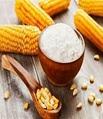
JADAM
Portugal
Starch also known as amylum, is an important food product and biomaterial used world-wide for different purposes Starch is a tasteless, fluffy white powder that is insoluble in cold water, alcohol Starch is a polysaccharide made up of 1,4 linkages between glucose monomers The chemical formula of the starch molecule is (C6H10O5)n Uses: Food Industry Adhesives (hot-melt glues, stamps, bookbinding, envelopes labels, wood adhesives, laminations, automotive) Paper Industry (paper sacks, paper coating, disposable diapers, feminine products) Construction Industry (concrete block binder asbestos, clay/limestone binder, fire-resistant wallboard, gypsum board binder, paint filler) Textiles Industry (warp sizing, fabric finishing) printing Cosmetic and Pharmaceutical Industry Mining Industry oil well drilling muds biodegradable plastic film leather finishing CAS Number 9005-25-8 Molar mass Variable Density Variable
Request for a quote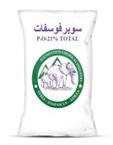
JADAM
Portugal
Chemical composition: PHOSPHOROUS PENTOXIDE (P2O5) Triple super phosphate 46% w/w Double super phosphate 36% w/w Single super phosphate 21% w/w Chemical formula Ca(PO4H2)2 Features and advantages: Granular fertilizer slow soluble in water, used in primary soil fertilization as a source of phosphorous Helps seed germination and seedling growth Helps stimulate flower buds and improve knots It helps to form sugars and proteins in plants It helps in the growth of the root and vegetative complex of plants. Usage rates: Between 20 - 70 kg per dunum depending on the crop type and the fertilizing stage CAS No. 65996-95-4 HS Code : 31031010 / 31031900 / 31031000
Request for a quote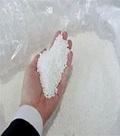
JADAM
Portugal
Urea is an organic compound with chemical formula CO(NH2)2 Urea serves an important role in the metabolism of nitrogen-containing compounds by animals and is the main nitrogen-containing substance in the urine of mammals Applications: Agriculture Urea is used as a nitrogen-release fertilizer it has the highest nitrogen content (46% N) of all solid nitrogenous fertilizers in common use Urea is a raw material for the manufacture of urea-formaldehyde resins, used mainly in wood-based panels such as particleboard Explosives Urea can be used to make urea nitrate, a high explosive that is used industrially and as part of some improvised explosive devices Automobile systems Urea is used to reduce the NOx pollutants in exhaust gases from combustion from diesel, dual fuel, and lean-burn natural gas engines properties: Molar mass 60.06 g/mol Density,1.32 g/cm3 Melting point 133-135 °C Solubility in water 545 g/L @25°C / pH 9,2 - 9,5 CAS number,57-13-6 WE number,200-315-5 Customs tariff code 3102
Request for a quote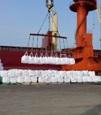
JADAM
Portugal
Phosphate rock is a crucial raw material used in the production of fertilizers It occurs in two primary geological forms: sedimentary and igneous Phosphate Rock Composition: Phosphorus (P) is the primary nutrient in phosphate rock and is crucial for plant growth and development It is typically reported as phosphorus pentoxide (P2O5) The phosphorus content in phosphate rock can range from 25% to 31% equivalent to 62-67.5 BPL% Calcium (Ca) is another essential element found in rock phosphate It plays a vital role in plant cell structure, root development, and nutrient uptake, it can range from 30% to 50% Carbonates (CO3) are common impurities found in phosphate rock, typically exist in the form of calcium carbonate (CaCO3) or magnesium carbonate (MgCO3) Silicates (SiO2) are another impurity often present in phosphate rock They can have positive effects on soil structure, water-holding capacity, and nutrient retention, it can range from a few percent to over 20% CAS Number: 1306-05-4
Request for a quoteDo you sell or make similar products?
Sign up to europages and have your products listed
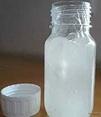
JADAM
Portugal
SLES 70 Sodium laureth sulfate (SLES), an accepted contraction of sodium lauryl ether sulfate (SLES), also called sodium alkylethersulfate, is an anionic detergent and surfactant found in many personal care products (soaps, shampoos, toothpaste, etc.) for industrial uses, SLES is an inexpensive and very effective foaming agent Its chemical formula is CH3(CH2)11(OCH2CH2)nOSO3Na Industries: Household chemicals, Cosmetic industry Properties: CAS number,9004-82-4 (n=5) pH 7,0 – 10,0 (5% @20°C) Melting / freezing point <5°C Boiling point range >100°C Molar mass Variable, typically around 421 g/mol UNII 410Q7WN1BX
Request for a quote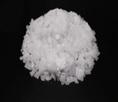
JADAM
Portugal
(Caustic Soda Flakes 98%) : Aqueous solution of sodium hypochlorite in demineralized/decalcified water, obtained from the reaction between chlorine gas and an aqueous solution of sodium hydroxide, both substances obtained with mercury-free membrane technology. Properties and applications production of hard soap, cleaning agents, exfoliating masks cleaning and disinfection in animal husbandry and bee-keeping obtaining aluminum in the steel and metallurgy industries pharmaceutical and chemical industry paper production in the pulp and paper industry refining of crude oil and mineral oils in the petrochemical industry industrial cleaning pH regulation in water treatment processes raw material in the production of pigments and dyes for paints Other chemical specifications formula NaOH CAS number1310-73-2 WE number215-185-5 Molar mass40 g/mol ADR UN1823 physical properties pH12,4 Melting / freezing point- 9°C (roztwór 7,5 %) Relative density2,12-2,13 g/cm3 (> 98,5 %)
Request for a quote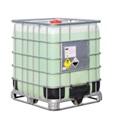
JADAM
Portugal
Hydrochloric acid 31% is a colorless transparent liquid Also known as muriatic acid or spirits of salt It is an aqueous solution of hydrogen chloride with the chemical formula HCl(aq) Physical specifications: HCl is a strong and highly corrosive acid Yellowish liquid with a distinctive pungent odor, soluble in water and dissolves in alcohols but insoluble in hydrocarbons. Stability and reactions: Stable and incompatible with metals, organic materials, alkalis, explosives, epoxies Properties and applications Boiling point / range 50°C Relative density >1123 kg/m3 @20°C food & pharmaceuticals industry chloroalkalies production processes water treatment processes for drinking water and industrial water production of industrial& household chemicals mining industry production of biofuels, oils and lubricants, in refining processes galvanising and zinc plating textile industry and tanning CAS number 7647-01-0 WE number 231-595-7 Molar mass 36,45 g/mol Customs tariff code 28061000 ADR UN1789
Request for a quote
JADAM
Portugal
Sodium carbonate, washing soda, soda ash and soda crystals is an inorganic compound with the formula Na2CO3 and its various hydrate It is white, water-soluble salt that yield alkaline solutions in water It is produced in large quantities from sodium chloride and limestone by the Solvay process Applications: As a cleansing agent for domestic purposes like washing clothes, it is a component of many dry soap powders detergent properties through the process of saponification which converts fats and grease to water-soluble salts manufacture of Glass industry, chemical intermediates, metallurgy, soaps and detergents, pulp & paper, flue gas emissions, coal treatment, ion exchange In the manufacture of sodium compounds like borax Properties: CAS Number 497-19-8 (anhydrous) EC Number 207-838-8 Chemical formula Na2CO3 Molar mass 105.99 g/mol (anhydrous) Appearance white solid, hygroscopic Odor Odorless Density 2.54 g/cm3 @25 °C (anhydrous) Melting point 851 °C (anhydrous) HS Code 28362090
Request for a quote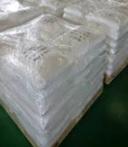
JADAM
Portugal
Sodium sulfate (Na2SO4), sodium sulphate or sulfate of soda is the inorganic compound with formula Na2SO4 as well as several related hydrates, white solid and highly soluble in water It is mainly used as a filler in the manufacture of powdered home laundry detergents and in the Kraft process of paper pulping for making highly alkaline sulfides Applications: As filler in powdered home laundry detergents In the Kraft process for the manufacture of wood pulp As a fining agent, to help remove small air bubbles from molten glass To help levelling in textile industry As a diluent for food colours As a heat storage in in some applications Properties: CAS Number 7757-82-6 Chemical formula Na2SO4 Molar mass 142.04 g/mol (anhydrous) Appearance white crystalline solid hygroscopic Odor odorless Density 2.664 g/cm3 (anhydrous) Melting point 884 °C (anhydrous) Boiling point 1,429 °C (anhydrous) Solubility in water 4.76 g/100 mL @0 °C 28.1 g/100 mL @25 °C 42.7 g/100 mL @100 °C HS Code 28331900
Request for a quote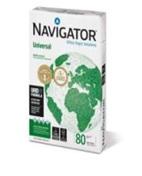
JADAM
Portugal
A4 printing paper 70/80/90 gsm We can provide a wide range of printing paper with high specifications from the most famous specialized manufacturers such as NAVIGATOR UNIVERSAL ,DOUBLE A , DISCOVERY and Multioffice Basis Weight, g/m: 80gsm and 70gsm Material:100% Wood free/100% virgin wood pulp Packing: 500 sheets per ream, 5 reams per carton(box) Sheet Size:210mm x 297mm, International Size A4 Sheet Size:297mm x 420mm, International Size A3 Whiteness, CIE: 169 Brightness D65, %= 110%, Natural White Capability: Capable, Inkjet Capable, Fax Capable. Packing: 500 sheets per ream, 5 reams per carton(box) One 20ft container load 8000 reams / 1600 boxes HS code: 480256
Request for a quote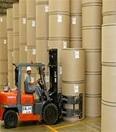
JADAM
Portugal
Kraft paper or kraft is paper or paperboard (cardboard) produced from chemical pulp produced in the kraft process Sack kraft paper is a porous kraft paper with high elasticity and high tear resistance, designed for packaging products with high demands for strength and durability Kraft pulp is darker than other wood pulps, but it can be bleached to make very white pulp Fully bleached kraft pulp is used to make high quality paper where strength, whiteness, and resistance to yellowing are important Applications: Kraft paper bags Plastic-hazard-free paper in paper sacks for cement, food, chemicals, consumer goods, flour bags Electrical insulation in large oil-filled transformers Paper grocery bags, multiwall sacks, envelopes and other packaging An inexpensive material for lining particle boards Properties: CAS Number 65996-61-4 Grammage (GSM) range 40-135 g/m2 Appearance poly coated natural kraft paper Color brown Odor none Auto ignition temperature 232-300°C
Request for a quote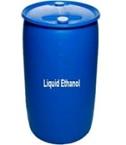
JADAM
Portugal
Ethanol 99% (also called ethyl alcohol, grain alcohol, drinking alcohol, or simply alcohol) is an organic compound with the chemical formula CH3CH2OH It is an alcohol, its formula also written as C2H5OH or EtOH Ethanol is a volatile, flammable, colorless liquid with a characteristic wine-like odor and pungent taste It is the active ingredient in alcoholic drinks Uses: Medical (anesthetic, antiseptic, antidote and solvent) Fuel (engine fuel, rocket fuel, fuel cells) Low-temperature solvent in laboratories Properties: CAS Number 64-17-5 UN number 1170 Chemical formula C2H6O Molar mass 46.069 g/mol Appearance Colorless clear liquid Odor wine-like, pungent Density 0.78945 g/cm3 @20 °C Melting point −114.14 ± 0.03 °C Boiling point 78.23 ± 0.09[3] °C Solubility in water Miscible Flash point 14 °C Custom tariff number (HS Code) 22071000
Request for a quote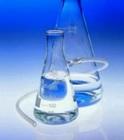
JADAM
Portugal
Methanol99% (CH3OH) also called methyl alcohol and wood spirit, is an organic chemical and the simplest aliphatic alcohol, with the formula CH3OH It is a light, volatile, colorless and flammable liquid with a distinctive alcoholic odor similar to that of ethanol It is used as a precursor to other commodity chemicals, including formaldehyde, acetic acid, methyl tert-butyl ether, methyl benzoate, anisole, peroxyacids Applications: Production of formaldehyde, acetic acid, methyl tert-butyl ether Methanol to hydrocarbons, olefins, gasoline Gasoline additive Energy carrier Internal combustion engines fuel Properties: CAS Number, 67-56-1 EC Number 200-659-6 UN number 1230 Chemical formula CH3OH Molar mass,32.04 g/mol Appearance,Colourless liquid Odor Faint and similar to ethanol Density 0.792 g/cm3 Melting point −97.6 °C Boiling point 64.7 °C Solubility in water miscible Custom tariff number (HS Code) 29051100
Request for a quote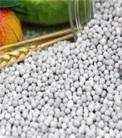
JADAM
Portugal
Di-ammonium phosphate (DAP), di-ammonium hydrogen phosphate, chemical formula (NH4)2(HPO4) is one of a series of water-soluble ammonium phosphate salts that can be produced when ammonia reacts with phosphoric acid It is brownish yellow pale granules with a slight ammonia odor Diammonium phosphate (DAP) is the world’s most widely used phosphorus (P) fertilizer. It is made from two common constituents in the fertilizer industry and it is popular because of its relatively high nutrient content and its excellent physical properties. Applications: DAP is used as a fertilizer, yeast nutrient in winemaking and mead-making, purifying sugar, wool industry , Agriculture industry Properties: CAS Number,7783-28-0 EC Number 231-987-8 HS Code 31053000 Chemical formula (NH4)2HPO4 Molar mass 132.06 g/mol Density,1.619 g/cm3 Melting point 155°C @428 K Solubility in water 57.5 g/100 mL @10°C, 106.7 g/100 mL @70°C PH 8
Request for a quote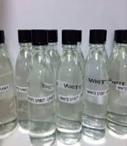
JADAM
Portugal
White spirit, mineral spirits, or mineral turpentine, turpentine substitute, petroleum spirits, is a petroleum-derived clear liquid used as a common organic solvent in painting White spirit is often used as a paint thinner The word "mineral" in "mineral spirits" or "mineral turpentine" is to distinguish it from distilled spirits (alcoholic beverages) or from true turpentine (distilled tree resin) It is insoluble in water and used as an extraction solvent, as a cleaning solvent, as a degreasing solvent and as a solvent in aerosols, paints, lacquers, varnishes, and asphalt products Uses: Degreasing and lubricating, Solvent and paint thinner,Portable stoves Industries: Household chemicals,Painting materials,Hydrocarbon solvents,Dry cleaning Properties: Initial boiling point (IBP) 145–174°C Final boiling point (IBP+21)°C Average relative molecular mass 150 Relative density 0.780 @15°C Flash point 31–54°C Solubility in water (w) < 0.1% CAS Number 64741-92-0 EC Number 232-489-3 UN no. 1268
Request for a quote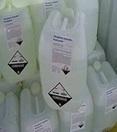
JADAM
Portugal
Sulfuric Acid 98% (H2S04) known in antiquity as oil of vitriol, is a mineral acid composed of the elements sulfur, oxygen, and hydrogen, with the molecular formula H2SO4 It is a colorless, odorless, and viscous liquid that is miscible with water Pure sulfuric acid does not occur naturally due to its strong affinity to water vapor; it is hygroscopic and readily absorbs water vapor from the air Concentrated sulfuric acid is highly corrosive towards other materials, from rocks to metals, it is an oxidant with powerful dehydrating properties Industries: Household chemicals, Fertilizers, Adhesives, oils, greases, Horticulture, Batteries Properties: CAS number 7664-93-9 WE number 231-639-5 Chemical formula H2SO4 Molar mass 98,08 g/mol Customs tariff code 28070000 ADR UN 1830, 8, II pH 0,3 (49 g H2S04/1000 ml H2O @25°C) Melting / freezing point +1,8°C (98.5 %), -12.6°C (96 %), -27°C (93 %) Boiling point range + 275°C ± 5°C (100%) Relative density 1,8144-1,8305 kg/l (90-100%)
Request for a quoteResults for
Carboxylic and anhydric acids - Import exportNumber of results
47 ProductsCountries